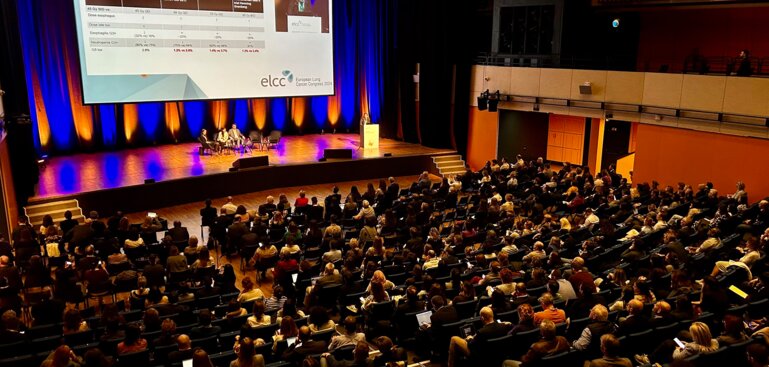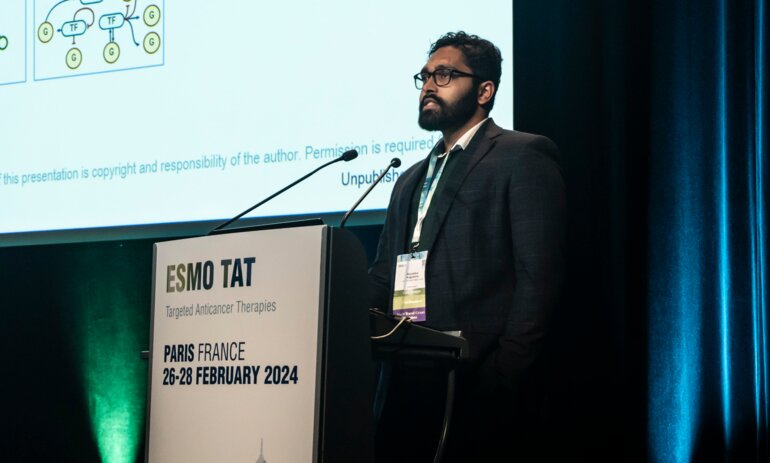Research is ongoing to revisit the classic neoantigen approach that may better interpret the complexity of the immune system
Neoantigens are widely acknowledged to be the drivers of the antitumour immune response. Extending the benefits of immunotherapy to a wider patient base relies on the identification and manipulation of novel neopeptides.
The classic neoantigens comprising cell-surface peptide–HLA complexes are derived from somatic mutations. The most useful neoantigens, in the context of targeted treatment, are those that are clonal, i.e. found on all the cancer cells, because this avoids the eradication of subclones of mutated cells within a heterogenous tumour, which can lead to the potential development of treatment resistance. In addition, if we are to develop ‘off-the-shelf’ cellular treatments and vaccines, rather than individual treatments tailored to individual patients, neoantigens should be recurrent, being both derived from a hotspot mutation, such as BRAF and KRAS, and being presented on a specific HLA molecule. The potential therapeutic value of such biomarkers has gained renewed interest in the search for recurrent neoantigens. Using a data-driven approach centred on HLA peptidomics, we were able to successfully identify a recurrent immunogenic clonal neoantigen derived from the combination of HLA-A*01:01 and RAS.Q61K (J Clin Invest. 2021;131:e129466). Not every neoantigen will be sufficiently non-self to induce an immune response, and validation of potential candidates is crucial to determining sensitivity and specificity. The complexity of the immune system also mandates that all promising new neoantigens need to be investigated in the in vivo setting. To this end, our group has already started to establish novel murine models. The first one, a melanoma model, revealed the importance of intratumour heterogeneity and its role in tumour aggressiveness and resistance to immunotherapy (Cell. 2019;179:219–235). We are currently working on a follow-up to this model.
As important as the somatically derived neoantigens undoubtedly are, we know that some patients with low tumour mutational burden (TMB) respond to immune checkpoint inhibitors, suggesting that there must be presentation of other types of tumour neoantigens. In light of this, we are interested in identifying novel, non-canonical categories of neoantigens. For example, we have demonstrated that some bacteria are able to infiltrate tumours, be presented on HLA class I and class II, and elicit immune reactivity (Nature. 2021;592:138–143). And factors known to affect the gut microbiome, such as fibre and probiotic use, have been shown to affect outcomes to immune checkpoint inhibitors (Science. 2021;374:1632–1640). We have further shown that another source of non-canonical neoantigens can be induced during stress responses such as high levels of interferon gamma or low levels of tryptophan in melanoma cells (Nature. 2021;590:332–337). Some peptides generated in this way are recurrent across patients, making them particularly interesting targets for immunotherapy.
Understanding the mechanisms of how these non-canonical neoantigens are derived may allow us to induce them and therefore amplify neoantigen presentation. Enhancing the presentation of such apparent peptides on cancer cells should render tumours more immunogenic and, consequently, more likely to respond to immunotherapy. Indeed, one of the biggest therapeutic challenges we are struggling with is finding ways to amplify the immunogenicity of cancers with low TMB and restricted neoantigen expression, which respond poorly to immune checkpoint inhibitors. A key challenge is ensuring that neoantigen-directed treatment is delivered specifically to cancer cells. One must also consider that somatic mutations are found on normal cells as well as on tumour cells, but it remains to be clarified if healthy cells present neoantigens and if bystander targeting of the peptides expressed could lead to unanticipated toxicities.
Finally, in terms of therapeutic usage, there has to date been very little comparison of the different T-cell-based therapeutic modalities – such as the use of cognate T-cell receptors (TCRs) in cell-transfer therapy and CAR T-cell therapy or T-cell bispecific antibodies – or exploration of combination treatment. The construction of comprehensive TCR libraries, which will enable rational investigation of different candidates via a range of functional studies and description of the signatures of TCR-expressing cells, should give an insight into which are worth developing into therapeutic agents.
Don't miss:
Keynote Lecture: Revisiting the neoantigen approach for cancer immunotherapy
27.02.2024, h. 08:45 – 09:15, Amphitheatre Bordeaux







